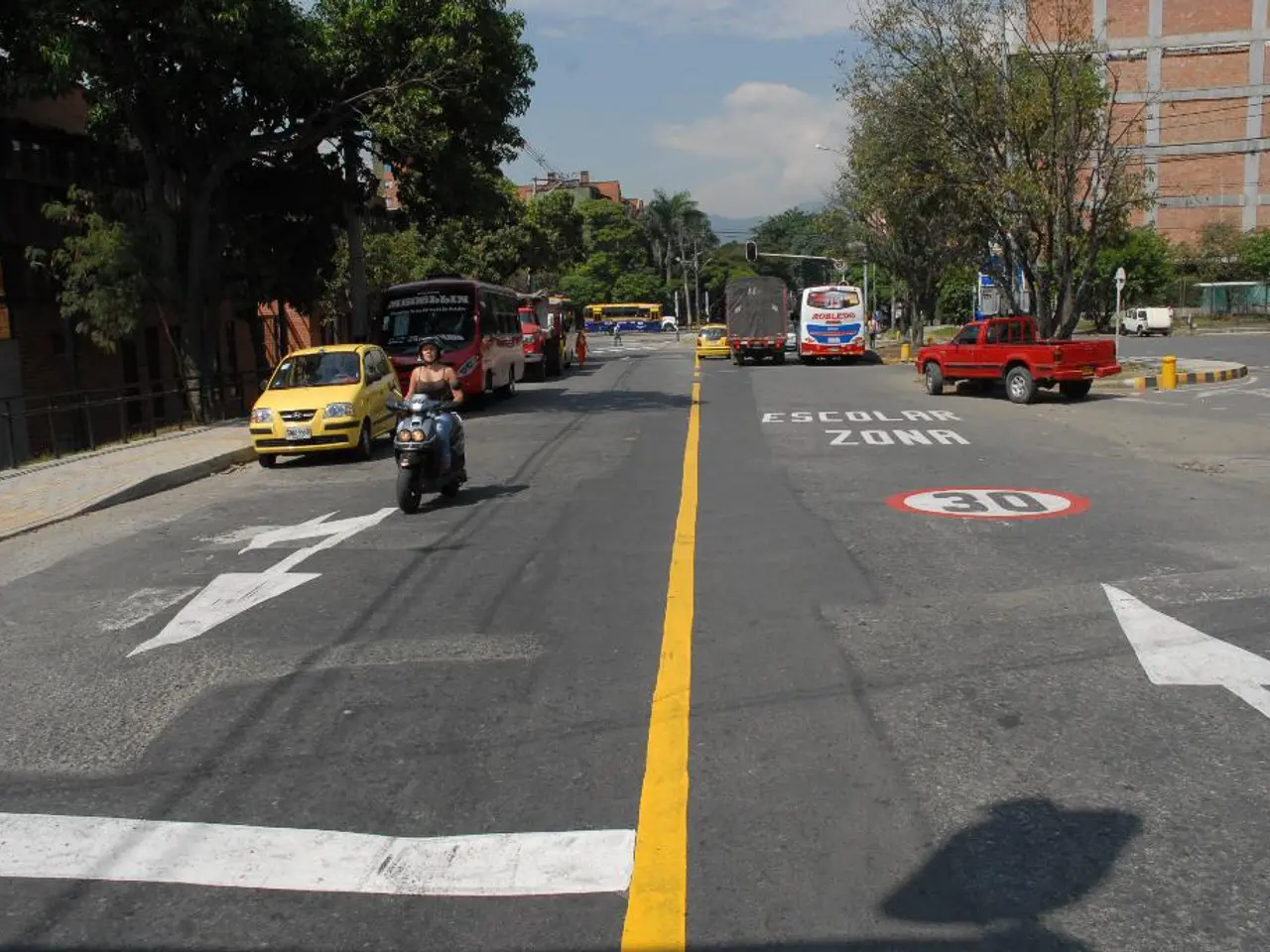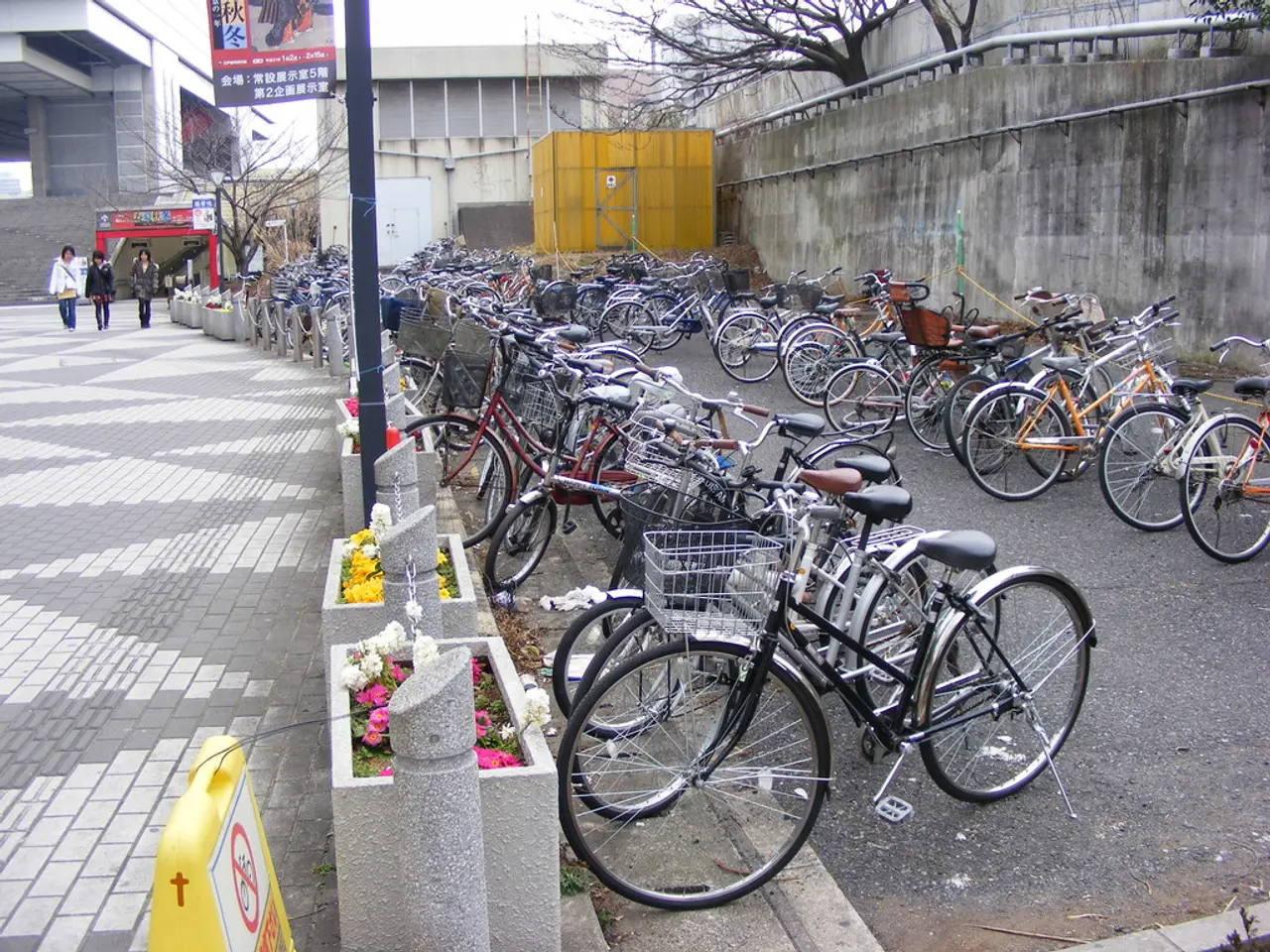Highway Halts Demanding Warning from Drivers, Decrees Supreme Court
In a recent judgment, the Supreme Court of India has once again addressed the issue of road safety, this time by adjusting the distribution of blame in a fatal road accident.
The accident in question occurred on a busy highway, where a student, riding without a proper license, was following too closely to the vehicle ahead. Suddenly, the car in front stopped without warning, leading to a collision.
Initially, the Madras High Court had cleared the car driver of any wrongdoing. However, the Supreme Court has overturned this decision, finding the car driver 50% responsible for the accident. The student, Hakim, was found 20% liable for contributory negligence, while the bus operator was found 30% liable.
The Supreme Court's decision highlights the importance of maintaining safe distances, avoiding sudden stops without warning, and using indicators or hand signals to communicate intentions on the road. These guidelines aim to promote predictable, disciplined driving behavior and reduce India's high rate of road accident fatalities.
According to the Spinny guide on highway driving and speed limits, drivers should follow the "three-second rule" to keep a safe buffer from the vehicle ahead, increasing to five seconds at night or during rain/fog. The Tata AIG guide emphasises the legal significance of sudden braking as a risk factor for causing accidents, while the Upstox guide stresses the importance of lane discipline and obeying traffic rules. The Maharashtra Highway Police Do's further advise drivers to adjust their speed based on vehicle type, road condition, and weather to ensure safe stopping distances.
In addition to these guidelines, drivers are encouraged to wear seat belts, use helmets for two-wheelers, and ensure their vehicle's lights and brakes are functional. By adhering to these rules, drivers can help create a safer road environment for everyone.
This latest judgment serves as a reminder to all road users in India to take their responsibilities seriously and drive with care and caution to prevent accidents and save lives. The court's decision also reinforces the need for predictable, disciplined driving behavior on highways, which can help reduce the country's high rate of road accident fatalities.
References: - Spinny guide on highway driving and speed limits [1] - Tata AIG on safe distance and signaling [2] - Upstox on lane discipline and traffic rules [3] - Maharashtra Highway Police Do's [4] - Supreme Court observation on sudden braking as negligence [5] - The Supreme Court's latest judgment places primary responsibility on the car driver.
In the light of the Supreme Court's decision, drivers should not only maintain safe distances and utilize proper signals while driving but also be mindful of their vehicle maintenance, such as ensuring that brakes are functional. Additionally, an active lifestyle, including sports participation, can promote alertness and response time on the road, thereby reducing the risk of accidents.







